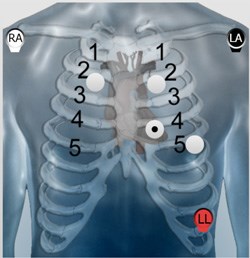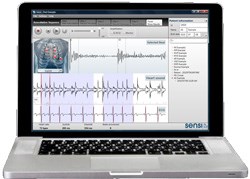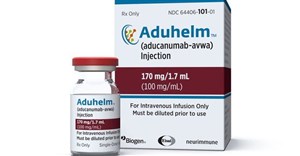Sensi gets FDA clearance
Diacoustic Medical Devices (Pty) Ltd is changing the way in which healthcare professionals can now assess a patient's heart sounds. With their computer-aided auscultation software program, Sensi, developed with the assistance of Stellenbosch University's Medical and Engineering faculties, they are increasing physicians ability to discern between pathological and physiological (innocent) heart murmurs to an accuracy of more than 90%. This is the same level of accuracy of most cardiologists.
Sensi used together with an electronic stethoscope and 3-lead ECG device acts as a solution to medical examiners to make good decisions on their cardiac diagnosis. It increases their confidence in diagnosing patients with congenital heart defects in times of uncertainty when a heart murmur may seem to be either pathological or physiological. At the same time it enhances their clinical practice and doctor-patient relationship as it saves the patient of unnecessary referral or emotional costs they might have undergone in the case of an incorrect diagnosis.
The acoustic signal processing algorithm specifically developed to help make Sensi a success, identifies different heart sounds in four auscultation locations of the heart; the tricuspid, the aortic, the pulmonary and the mitral valve location. The heart sounds recorded through the electronic stethoscope are graphically displayed onto a screen for the doctor to visually interpret what he/she hears and gives them more confidence when diagnosing a patient for possible heart murmurs and referrals to a paediatric cardiologist.
A step in the future
Computer-aided auscultation will become the tool of choice to assess heart murmurs and Sensi is currently pathing the way to this future. The stethoscope being one of the oldest primary examining tools in history is now combined with modern age technology in order to create a more satisfactory, cost effective and accurate method in determining whether a child has a pathological or an innocent heart murmur.
Diacoustic Medical Devices are changing the way in which healthcare professionals can now assess patients' heart sounds. With their computer-aided auscultation software program, developed with the assistance of Stellenbosch University's Medical and Engineering faculties, they are enhancing physicians ability to discern between pathological and physiological heart murmurs to an accuracy of more than 90%, the same accuracy level of most cardiologist.

The correct functioning of the heart is vital in a child's growth process to adulthood. Children born with congenital heart defects (CHD) have a good chance in having growth defects because of blood flowing too quickly or in abnormal pathways and can obstruct future growth of the heart because of this abnormal flow. Sometimes CHD improves without treatment. Other defects are so small that they do not require any treatment. Most of the time CHDs are serious and requires surgery and/or medication and if left untreated CHDs could result in the non-optimal development of the child or even heart failure sooner or later in life.
Congenital heart defects accuse malformation of the heart structure, resulting in murmurs due to the turbulent blood flow within the heart. A trained physician will normally identify/hear suspected murmurs, but will have difficulty to distinguish between a murmur caused by a heart pathology or a physiological condition.
Medical studies have found that the estimated prevalence of heart murmurs among children range from 72%-80%. Most doctors refer these patients to a paediatric cardiologist due to subjective judgment and limited listening ability to judge whether the murmur could be pathological or innocent. Although heart murmurs are the most common reason for referral to a paediatric cardiologist, 61% of referrals are the result of innocent murmurs. These referrals can cause a large amount of emotional or financial stress to the parents, which can possibly be avoided with the correct assistance. In South Africa alone there are only 24 paediatric cardiologists, equally divided between the public and the private sector, limiting the resources available to treat children with heart defects.
Studies in England have found that more than half of the CHDs are undiagnosed during routine neonatal examination and a third during the six week examination, which could cause a series of growth defects among children as they grow older. It is definitely understandable that during the examination of a new born baby between the ages of 1 to 8 weeks, with a heart rate between 120bpm-150bpm (a heart rate too fast in distinguishing and identify specific sounds) that murmurs can be too soft to hear for the normal or untrained ear.
Recent studies
Recent studies prove that there is a definite need for improvement in detecting congenital heart defects among children and that medical examiners could find a quick second opinion of good use during their examinations. Diacoustic Medical Devices (Pty) Ltd along with the trusted help of many medical practitioners in the industry have created decision support software called Sensi, that can assist a medical examiner during a paediatric patient's heart auscultation (listening of the heart sounds). Heart sounds detected via auscultation represent distinct cardiac activities. The first two heart sounds, systole and diastole (S1 and S2), the lub-dub sound, are 'normal' heart sounds that should be detectable in most patients. The tricuspid valve, Mitral valve, aortic valve and pulmonary valve are all components in the creation of these two heart sounds. Close attention and active listening of the timing and intensity of these individual components are required in order to accurately interpret any underlying cardiac abnormalities, which can often with the normal ear be easily missed or even over interpreted into a pathological heart murmur.
Diacoustic did not have the agenda in reinventing the wheel, but rather to use a tool that doctors are familiar with and used for over 200 years, the stethoscope. With a mix of some of the old and the modern era technological drive, they have created a computer-aided auscultation (CAA) device named Sensi, which is cost effective and accurate in picking up whether a child has a pathological or an innocent heart murmur. This could save not only the patient having to undergo direct and indirect costs, but also give doctors the opportunity to enhance their clinical practice, increase confidence in their cardiac diagnosis and enhance the trust in a patient-doctor relationship.
Sensi software used in combination with a WelchAllyn Elite Electronic Stethoscope as well as an ECG device digitally captures the patient's heart sounds and analyses it on the computer. The computerised software detects heart sounds of certain frequencies and intensities, specifically those known to be produced by the heart in both normal and abnormal situations. Along with the ECG device, Sensi helps to identify and classify basic heart sounds and murmurs and gives a full summary of the findings in a user friendly, easy to read and interpret format. With Sensi as a diagnostic aid it allows the doctor to have almost the accuracy of a paediatric cardiologist when it comes to interpreting the results.
A paediatrician in the Western Cape, used Sensi during a normal flue check up on a five-year-old girl. After listening to her heart with a stethoscope the doctor picked up that she had a heart murmur. The doctor informed the mother and according to him it was normal in young children. In her case the murmur was just a little too loud and the quality of the signal too harsh. Using Sensi to evaluate the murmur, the doctor could confirm that it was in fact a so called pathological murmur, i.e.: the sound heard was produced by a small hole between the two ventricle chambers in the heart (VSD). The Doctor then scheduled an appointment with a paediatric cardiologist who not only confirmed their diagnosis, but also discussed a procedure to close the hole in the heart. Under normal circumstances, without the help of Sensi, the doctor could have misdiagnosed the murmur as physiological (innocent). Untreated this could have resulted in sub-acute bacterial endocarditis, caused by a bacteria, which once in the bloodstream settles and multiplies in the heart. A visit to the dentist to have teeth removed or cleaned can be one of the reasons of these bacteria entering the bloodstream.
The company says this not only the future of heart auscultation, but anticipates a new level of defective cardiac diagnosis as GP's, paediatricians and/or mid-wives now have a visual representation of what they hear and think and can give patients at point of care proper and sensitive cardiac diagnosis. It is important for doctors to detect any unusual noises, diagnose and treat problems before they become life threatening and for parents to be aware of the condition of their children's growing hearts. For more information go to www.diacoustic.co.za












